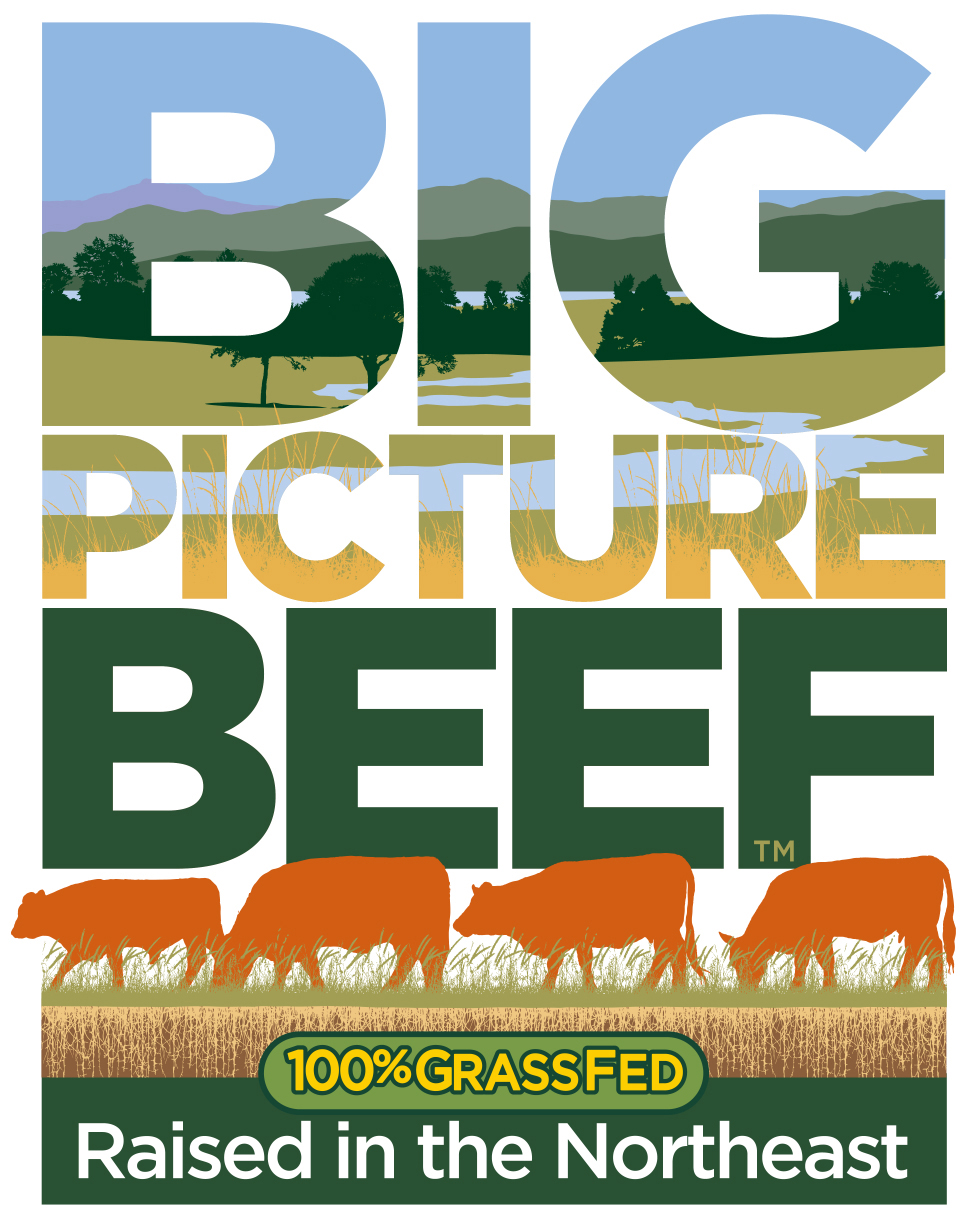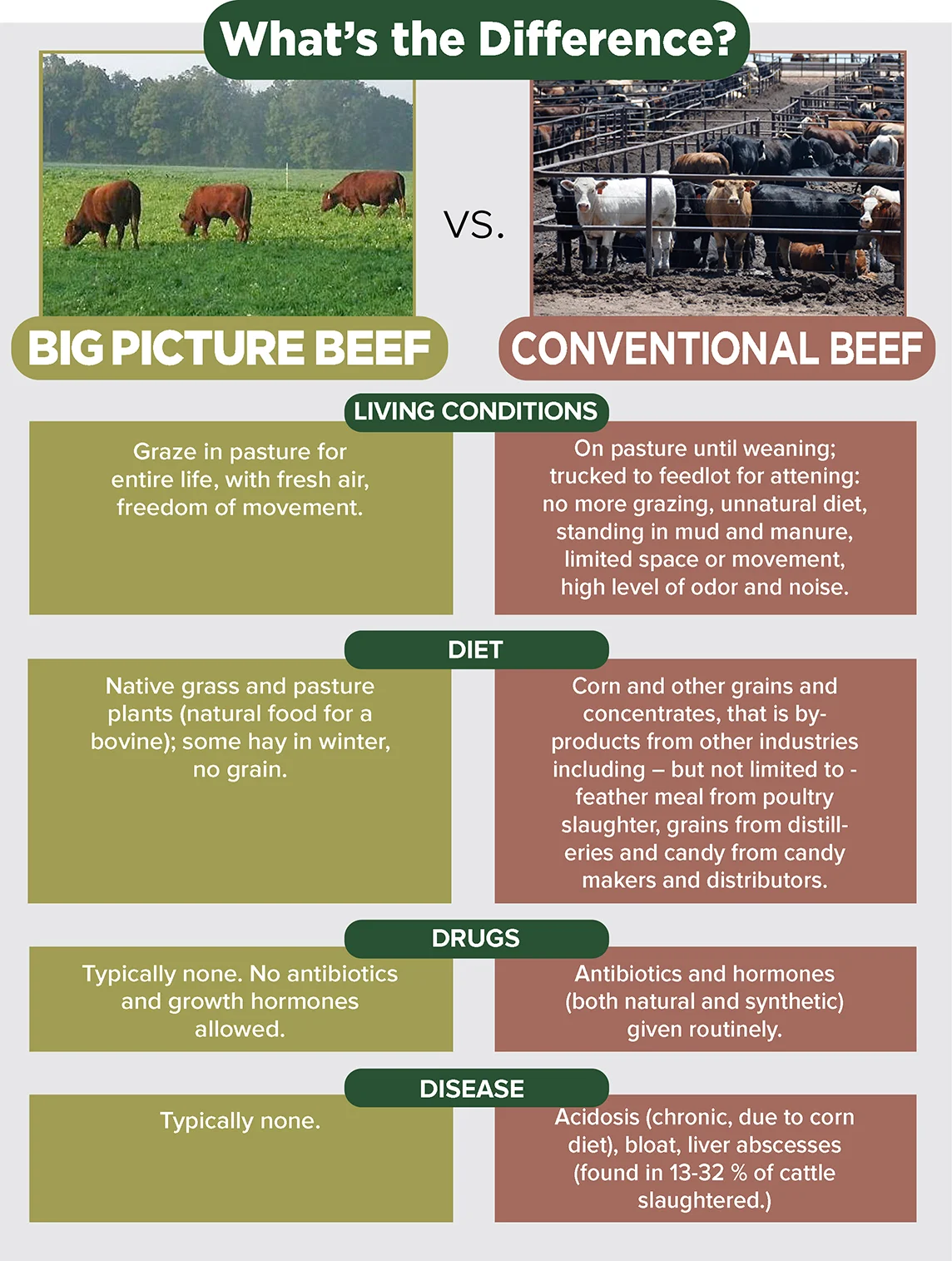FEEDLOT CONDITIONS
Conventionally raised beef cows, regardless of where in the US they were born, are typically trucked to a feedlot at ten months of age, where they are fattened for about four months before being slaughtered. Forty percent of feedlot cattle are at facilities housing 32,000 head or more. Instead of grazing on pasture they are confined to pens, each typically housing 100 to 125 animals, where the cattle stand in mud and manure. Their rations are brought to the pens.
Cattle are ruminants and therefore their natural food—the food they have evolved to digest—is grass and forage. But once on the feedlot they never again see a blade of grass. Most of their feedlot diet (70-90%) is corn and concentrates.
Grain sickens cattle, but not usually to the point of death at the feedlot, because they are fed antibiotics daily to keep them alive and gaining weight. These facilities also use baking soda by the tractor-trailer load to counter the acidity caused by the corn diet.
Nevertheless, feedlot acidosis is chronic, causing discomfort and sometimes life-threatening illness. Sudden death from bloat is frequently cited as a cause of cattle losses; animals may exhibit signs of discomfort by kicking their sides or stomping their feet and can be dead within the hour; one remedy is forcing a tube down the esophagus to release the trapped gas. Another condition caused by the diet is liver abscesses, which are found in 13-32% of cattle slaughtered.
Despite all the health problems and extra expenses entailed in keeping the animals from dying from their diet, the industry continues to feed corn because it fattens cattle quickly and because it is the cheapest feed - and it is cheap because corn crops are subsidized by taxpayer dollars.
For more detail on the contrast we offer to feedlot production, see our Humane Handling page.


